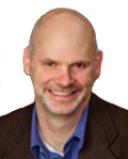Autism
Parenting a Child with Autism: Resist Pressure, Find Success
For each individual, the journey is unique
Posted September 10, 2014
By Christine Malecki, Ph.D., guest contributor
Success in the case of people with autism can be like beauty—a subjective term that depends on the eye of the beholder.
It shouldn’t be surprising that parents of children, adolescents, and adults with autism spectrum disorders (ASD) face many challenges (Ogston, Mackintoch, & Myers, 2011). Among the biggest is the pressure to do everything possible to ensure their child is successful (Myers, Mackintoch, & Goin-Kochel, 2009).
Many parents equate success to having their child act more like a “typical kid,” displaying as few characteristics of autism as possible. Others see success as a measure of happiness and balance in maintaining a life not consumed by ASD (DeGrace, 2004).
Depending on where a family falls along this continuum, outside pressure can be very difficult and is felt every time a new article on autism treatment is published. It’s not unusual for scientific journal articles that are based on studies with many cautions and limitations to be translated into nightly news segments touting “a new cure for autism” or “new hope for people with autism” (Edler, 2013).
These “new cures” may involve intense and costly interventions, major family-wide lifestyle changes, and/or programs that require distant travel (Myers et al., 2009).
In addition to the flashy news segment with sensational headlines, parents are faced with anecdotal stories from caring family and friends. Perhaps someone knows someone who claims a special diet can eliminate autism. Perhaps a celebrity crusades against vaccinations and puts pressure on parents of kids with ASD as well as parents everywhere to ignore scientific evidence and reason and instead listen to fear (Edler,2013). These pressures are felt in a very real way, and they add to the daily struggles of parenting a child with ASD.
So what knowledge can be used to combat these pressures or put things in perspective?
It helps to think about the developmental reaction range, epigenetics, and goodness of fit—concepts used in genetics, medicine, and developmental psychology (Bronfrenbrenner & Ceci, 1994; Masterpasqua, 2009; Shaffer,1999). These concepts refer to the complexity of the nature-nurture concept and a continuum of development that we all possess. Outcomes along the continuum can result from biology or genetics, environmental influences, or most commonly a complex interaction between the two.
For example, I was born with a set of genes that make me 5 feet, 4 inches tall with shorter legs, a certain muscle mass, and tendencies for a certain amount of flexibility. Even with the most intense conditioning, coaching and practice, I have a ceiling for how good of a basketball player I can become. However, with excellent conditioning, coaching, and practice, I might be a pretty good gymnast. If my only goal in life is to be a basketball star, I may not feel successful. If, however, I alter my expectations and decide to work to be a gymnast, I will find a pretty good match and be more likely to experience success.
It is uncomfortable to talk about the reaction range – that continuum of skills in any particular area that we are born with – because it is uncomfortable to talk about any ceiling on ANY skills or abilities. We want to believe that anyone can do anything they decide to do if they work for it. Maybe it is more comfortable to talk about finding goodness of fit – the right match between our skills and our environment.
Many parents of children with ASD can take some comfort in the reaction range or epigenetics – the complex interaction between our genes and our environment – in that we may have some limitations but also that we can push our skills and abilities. Amazing teachers, a positive environment, scientifically based early intervention, and family communication and play therapy can help push all children to the top of their reaction ranges (Shaffer, 1999; Howlin, Magiati, & Charman, 2009).
In fact, epigenetics might suggest we can “push the envelope” on that reaction range and actually stretch the limits of our genetics. However, even with the very best of interventions, a child with a true ASD will most likely not be “cured” or live a life without characteristics of autism. Individual differences in our genetic makeup suggest that some children will have more severe levels of challenge, some that will respond less to even the most intense intervention.
One might think of former football star Doug Flutie and his son, who has autism (“Doug Flutie,” 2014). The Flutie family had full-time, live-in therapists and a special room in their home just for intervention and therapy. They had all the resources needed to provide the most intense and costly interventions, yet their son is now in his early 20s and does not use spoken language.
The young Flutie is more impacted by characteristics of autism, and his developmental reaction range was on the more severe end of the spectrum. However, because of his family’s dedication and resources, he is most certainly living a comfortable and successful life at the very top of his potential in most areas.
It breaks my heart thinking of parents of children severely affected by ASD who are doing as much as they can, yet see only small steps of progress. They have the added guilt-inducing pressure of hearing celebrities and news anchors talking about the “cure of the day” for autism (Edler, 2013), with more doubts creeping in that “maybe we aren’t doing enough.”
Parents question themselves, their parenting, and their dedication. What the reaction range and epigenetics might suggest to parents of children with ASD is to provide the intervention and supports for your child that allow your entire family to be balanced, healthy, and successful. Early intervention is critical to allow your child to push toward the high end of that reaction range (CDC, 2014). Just take heart that not all of us need to be WNBA basketball stars to be happy and successful. We need to work to find the healthiest match between our skills and our environment.
Some children with ASD will become adults with careers, relationships, and complete independence. Some children with ASD will not speak, and some may never hold a job independently.

Do the best you can for your child. Don’t compare yourselves to others. And, remember the measures that are most important—that these children and adults find areas where they can achieve success, that they continue to make progress, that they enjoy life, and most importantly, that they are loved.
Professor Christine Malecki is director of the School Psychology Program at Northern Illinois University. She studies social support and peer relationships in children and adolescents and helps schools make changes to help students be more successful. Christine and her husband have three children, one of whom has an autism spectrum disorder.
References:
Bronfrenbrenner, U. & Ceci, S. J. (1994). Nature-Nurture reconceptualized in developmental perspective: A bioecological model. Psychological Review, 101(4), 568-586.
Center for Disease Control and Prevention. (2014). Community report on Autism. Autism and Developmental Disabilities Monitoring Network. Retrieved from http://www.cdc.gov/ncbddd/autism/states/comm_report_autism_2014.pdf
DeGrace, B.W. (2004). The everyday occupation of families with children with Autism. American Journal of Occupational Therapy, 58, 543-550.
Edler, J. H. (2013). Autism and the gluten-free, casein-free (GFCF) diet. [Web blog]. Retrieved from http://www.healthfamilydeals.com/healthfitness/autism-and-the-gluten-fr…
Flutie, D. (2014). Doug Flutie foundation for Autism. Retrieved from http://www.flutiefoundation.org/about-autism/stories-of-hope/dougie-flu…
Mancil, G.R., Brian, B. A., & Bedesem, P. (2009). Parental stress and autism: Are there useful coping strategies?. Education and Training in Developmental Disabilities, 44(4), 523-537.
Masterpasqua, F. (2009). Psychology and epigenetics. Review of General Psychology, 13(3), 194.
Myers, B. J., Mackintosh, V. H., & Goin-Kochel, R. P. (2009). ‘My greatest joy and my greatest heart ache:’ Parents own words on how having a child in the autism spectrum has affected their lives and their families’ lives. Research in Autism Spectrum Disorders, 3, 670-684.
Ogston, P.L., Mackintosh, V.H., & Myers, B.J. (2011). Hope and worry in mothers of children with an autism spectrum disorder or Down Syndrome. Research in Autism Spectrum Disorders 5, 1378-1384.
Shaffer, D. R. (1999). Methods of studying hereditary influences. In D. R. Shaffer (Eds.), Developmental psychology: Childhood and adolescence, fifth edition (92-109). Baltimore, MD: Brooks Publishing Co.




